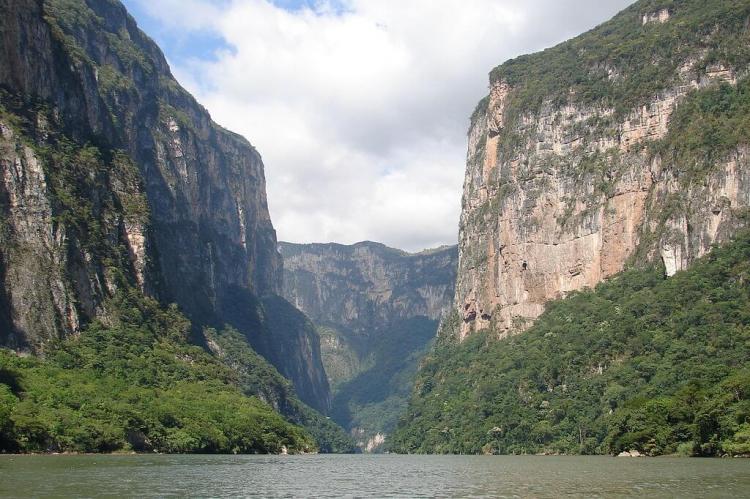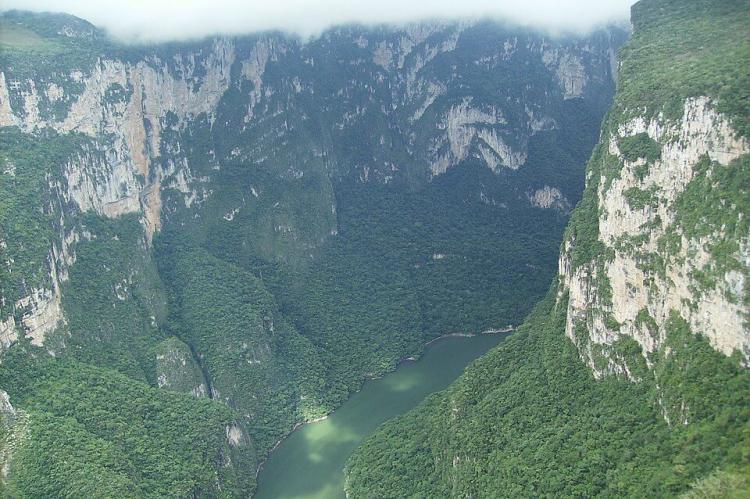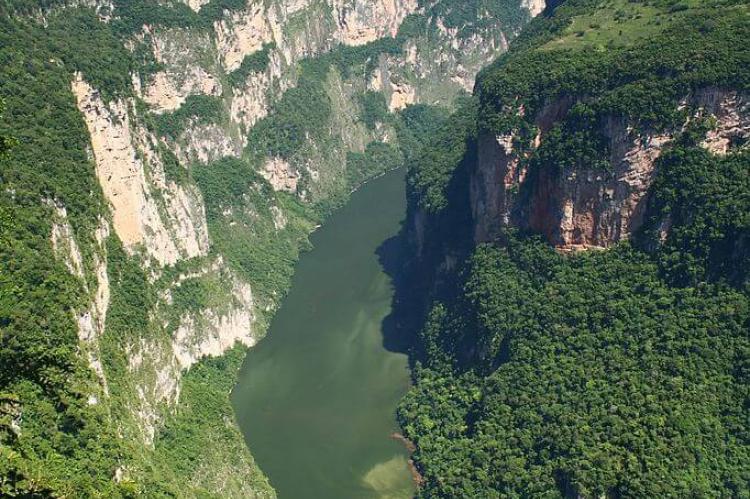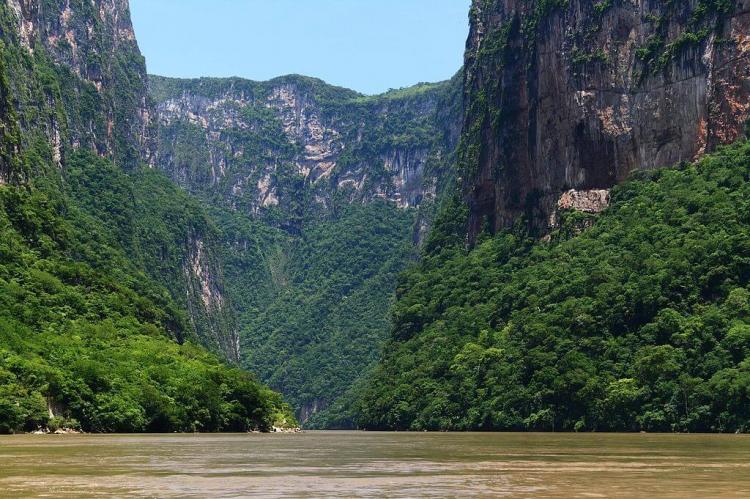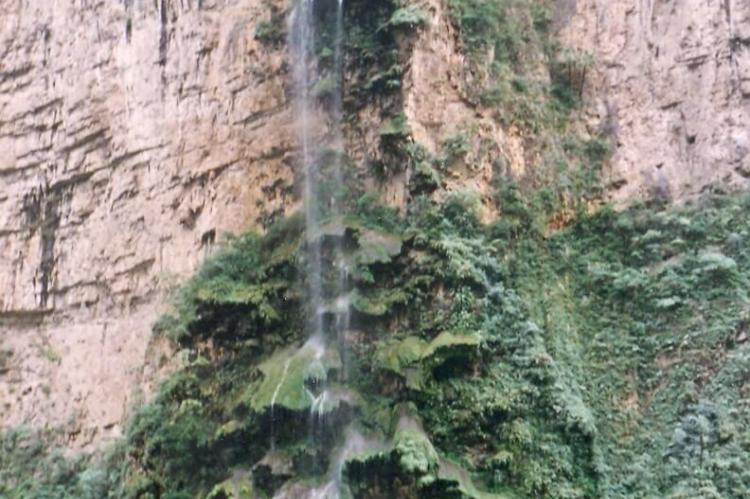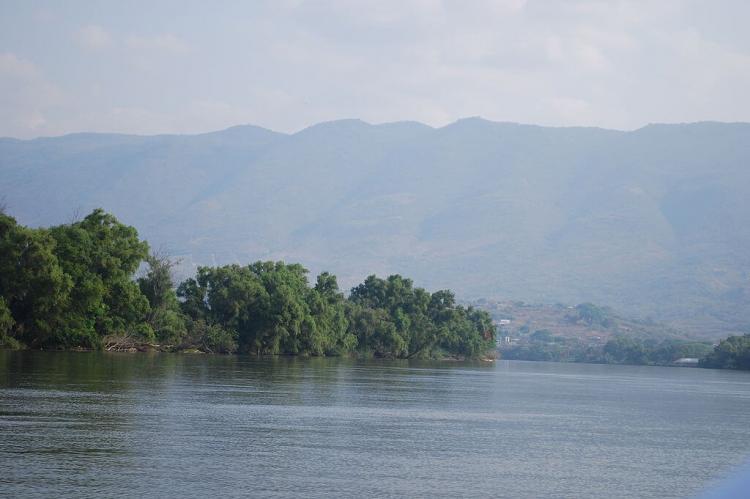Mexico's Sumidero Canyon and National Park: Nature's Grandeur Along the Grijalva River
Sumidero Canyon in southern Mexico is a stunning geological wonder formed over thousands of years by the powerful Grijalva River. Within the canyon's boundaries, Sumidero Canyon National Park is an ecological sanctuary that offers a chance to explore and appreciate the natural world.
Mexico's Sumidero Canyon and National Park: Nature's Grandeur Along the Grijalva River
Nestled in the southern expanse of Mexico, Sumidero Canyon is a captivating geological marvel that ignites the imagination and evokes profound sensory experiences. Sculpted over millennia by the unwavering might of the Grijalva River, this majestic canyon serves as a poignant testament to the raw forces of nature and the awe-inspiring beauty it can craft. Within the bounds of Sumidero Canyon National Park, a sanctuary of ecological importance and natural diversity unfolds, offering a haven for exploration and appreciation of the wonders of the natural world.
Formation and Geography
The Sumidero Canyon, situated just north of Chiapa de Corzo, is a testament to the geological forces that have shaped Mexico's landscape over millions of years. It was formed through tectonic activity and erosion. A crack in the region's crust provided an initial fissure, which was then sculpted and deepened by the relentless flow of the Grijalva River.
Stretching over 13 kilometers (8 miles), the canyon boasts walls that soar up to 1,000 meters (3,300 feet). Its width varies between 1 and 2 kilometers (3,300 - 6,600 feet), creating a dramatic landscape of towering cliffs, cascading waterfalls, and hidden caves. The sheer scale and rugged beauty of the canyon's vertical walls make it a sight for visitors worldwide.
The Mighty Grijalva River
The Grijalva River, formerly known as the Tabasco River, is the lifeblood of the Sumidero Canyon. Originating in the Chiapas highlands, the river winds through the rugged terrain of southeastern Mexico, carving a path through the heart of the canyon. Named after Juan de Grijalva, a Spanish conquistador who explored the area in 1518, the river has played a central role in shaping the region's landscape and ecology.
The Grijalva River flows 480 kilometers (300 miles) from Chiapas to the state of Tabasco, where it empties into the Bay of Campeche on the Gulf of Mexico. Its drainage basin covers an area of 134,400 square kilometers (51,900 square miles) and sustains a diverse array of ecosystems and wildlife along its course.
Sumidero Canyon National Park
Encompassing 21,789 hectares (53,840 acres) spread across four municipalities in Chiapas, Sumidero Canyon National Park is a haven of ecological significance and natural diversity. Under the stewardship of CONAMP, this federally protected area boasts a diverse tapestry of ecosystems, from low- to medium-height deciduous rainforests to mixed pine-oak forests and grasslands. Amidst this varied landscape, visitors can discover a rich array of plant life, including breadnut, Guanacaste, cedar, and various fig trees.
The park's lush vegetation offers sanctuary to a wide range of wildlife, from elusive jaguars and spider monkeys to an array of vibrant bird species, such as the great curassow and river crocodile. Along the canyon's towering walls, epiphytes, orchids, bromeliads, and cacti thrive, painting the rugged terrain with bursts of color.
The biodiversity within Sumidero Canyon National Park is as impressive as its geological formations, which span four Chiapas municipalities across its expanse. A rich tapestry of ecosystems flourishes, including deciduous rainforests, pine-oak forests, and grasslands.
The park is home to a remarkable array of plant species, from breadnut and Guanacaste to cedar and various fig tree types. Its diverse habitats provide ample exploration and discovery opportunities. Epiphytes, orchids, bromeliads, and cacti cling to the canyon's vertical walls within its microclimates, contributing to its vibrant biodiversity.
The wildlife of Sumidero Canyon National Park is equally impressive. Over 53 species of mammals, 195 species of birds, and 12 species of reptiles are documented within its boundaries. Endangered and threatened species such as the spider monkey, jaguarundi, ocelot, and white-tailed deer find refuge within the park's protected boundaries. In contrast, bird species such as the great curassow and the river crocodile inhabit its waterways.
Cultural Significance and Tourism
Beyond its ecological importance, Sumidero Canyon holds cultural significance for the indigenous communities of Chiapas. The canyon has been a source of inspiration and reverence for centuries, its towering cliffs and rushing waters featuring prominently in local folklore and traditions.
In recent decades, the canyon has also become a premier tourist destination, attracting visitors from far and wide to experience its natural splendor firsthand. Ecotourism activities such as boat tours, hiking trails, and wildlife watching allow visitors to explore the canyon's wonders while supporting conservation efforts and local communities.
Challenges and Conservation Efforts
Despite its protected status, Sumidero Canyon continues to face ongoing threats from human encroachment, including deforestation, agricultural expansion, and poaching. These activities pose significant challenges to the park's delicate ecosystems and the species that inhabit it.
In response, organizations such as the National Commission of Natural Protected Areas (CONAMP) and local conservation groups have implemented various initiatives to safeguard the canyon's biodiversity and promote sustainable development. These efforts include habitat restoration projects, community-based conservation programs, and environmental education campaigns aimed at raising awareness about preserving this natural treasure for future generations.
Conclusion
Sumidero Canyon and the Grijalva River are testaments to the remarkable beauty and biodiversity of Mexico's natural landscapes. From the canyon's towering cliffs to the river's meandering waters, these natural wonders offer a glimpse into the awe-inspiring power of geological forces and the resilience of life in the face of adversity. By protecting and preserving places like Sumidero Canyon and the Grijalva River, we can ensure that future generations will continue to be inspired by the wonders of the natural world for years to come.
